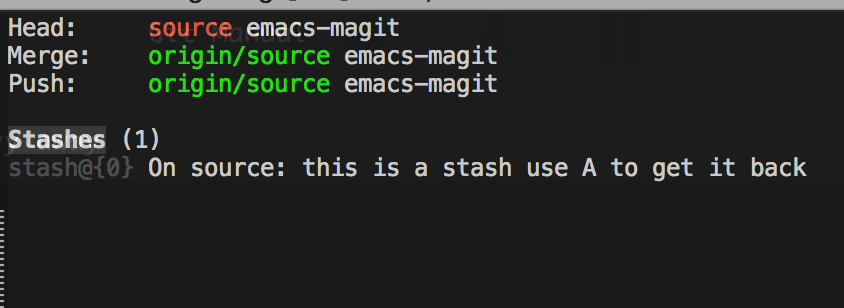

Caution should be taken before using stash drop command, as it is difficult to undo if once applied. Generally, it deletes the most recent stash. This command is used to delete a stash from the queue. The main difference between both of these commands is stash pop command that deletes the stash from the stack after it is applied. The stash pop command is quite similar to stash apply. The popping option removes the changes from stash and applies them to your working file. Git allows the user to re-apply the previous commits by using stash pop command. Git Stash Pop (Reapplying Stashed Changes) In case of more than one stash, you can use “stash apply” command followed by stash index id to apply the particular commit. It is showing output as “ Changes not staged for commit.” Consider the below output: $ git statusįrom the above output, you can see that the repository is restored to its previous state before stash. Now, if you will check the status of the repository, it will show the changes that are made on the file. The above output restores the last stash. To apply the commit, use the stash command, followed by the apply option. You can re-apply the changes that you just stashed by using the stash command. It will show all the stashes with indexing as so on. If we have more than one stash, then It will display all the stashes respectively with different stash id. To check the stored stashes, run the below command: $ git stash list

The above stash will be saved with a message Git Stash List (Check the Stored Stashes)

To stash a change with a message, run the below command: $ git stash save "" Git Stash Save (Saving Stashes with the message): At this point, you can switch between branches and work on them. My work is just stashed in its current position. We can check the status of the repository. To save it temporarily, we can use the stash command. To check the current status of the repository, run the git status command.įrom the above output, you can see the status that there are two untracked file Jenkinsfile and sts.yml available in the repository. To stash, let’s have a look at the repository’s current status. We can stash it to save as its current status. So I want to save it temporarily for future use. I am in a messy state, and I have not entirely edited any file yet. I have made changes to my project final-capstone in two files from two distinct branches. Let’s understand it with a real-time scenario. Some useful options are given below: Stashing Work Many options are available with git stash. Stashing takes the messy state of your working directory, and temporarily save it for further use.

Generally, the stash’s meaning is “ store something safely in a hidden place.” The sense in git is also the same for stash Git temporarily saves your data safely without committing. The below figure demonstrates the properties and role of stashing concerning repository and working directory. The git stash command enables you to switch branches without committing the current branch. You don’t want to make a commit of half-done work. The "pop" option will reapply the last saved state and, at the same time, delete and clean it from the Stash.Sometimes you want to switch the branches, but you are working on an incomplete part of your current project. Running this command will result in a clean Working Copy, but the changes are saved on Git's "Stash" so you can restore them at a later point if you need them: $ git stash pop That's when - instead of discarding them - you can choose to save them temporarily: $ git stash -include-untracked Sometimes, you won't be 100% sure if you really don't need your local changes anymore. If, additionally, you have untracked (= new) files in your Working Copy and want to get rid of those, too, then the git clean command is your friend: $ git clean -fĪgain: please be careful with these commands! Once you've discarded your local changes, you won't be able to get them back! Saving Changes on the Stash If you want to undo all of your current changes, you can use the git restore command with the "." parameter (instead of specifying a file path): $ git restore. In case you are using the Tower Git client, you can discard local changes in a file simply from its contextual menu - or even discard only parts of your changes, while keeping the rest: Discarding All Local Changes Please be careful because you cannot get these changes back once you've discarded them! This will undo all uncommitted local changes in the specified file. If you want to discard this type of changes, you can use the git restore command: git restore index.html They exist in your Working Copy, but you haven't wrapped them in a commit, yet. Changes that haven't been committed to the local repository are called "local" changes in Git.


 0 kommentar(er)
0 kommentar(er)
